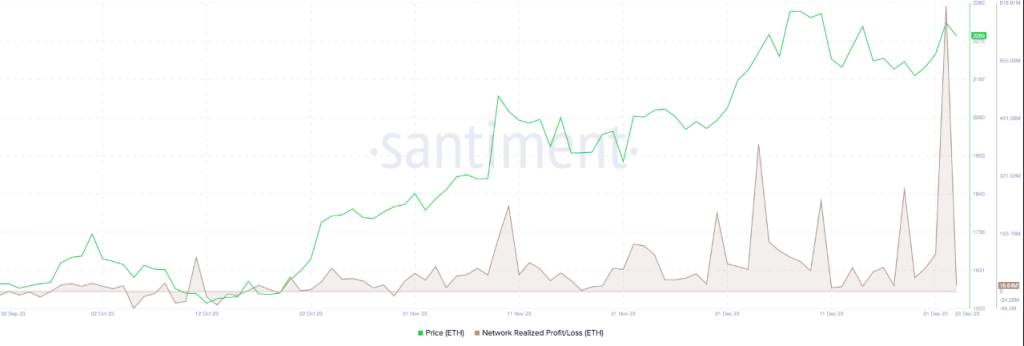Ethereum: Rebalancing at $2,300 – Are we heading higher or facing a downtrend?

The past few weeks have been a roller coaster ride for Ethereum. As Bitcoin’s dominance weakens and traders seek greener pastures, the price of Ethereum has surged to a critical resistance level near $2,500.
However, a palpable sense of anxiety remains in the air, with questions about Ethereum’s long-term scalability and growing bearish whispers. Can the second-largest cryptocurrency navigate this tightrope and reclaim its DeFi crown, or will it fall from grace?
Ethereum Rise: Growth, Innovation, and Challenges
Beneath the surface of a rising price chart lies a complex story of strengths and weaknesses. Ethereum’s market capitalization has surged 87% year-on-year, jumping from $140 billion to $267 billion, painting a picture of strong growth.
Key contributors to this rise are the merge upgrade, a landmark event that simplifies Ethereum’s blockchain, and the burgeoning DeFi ecosystem, vibrant with innovative applications.
But beneath this façade lurks a serious bottleneck. This is Ethereum’s layer 1 scalability limitation. The network’s notoriously high transaction fees and slow throughput have been a thorn in the side of DeFi scaling, frustrating both users and developers eager for a more seamless experience.
As of this writing, the price of Ethereum on December 26 is hovering around $2,233, painting the daily and weekly charts red, down about 1.5%, Coingecko data shows. This recent decline adds even more intrigue to the complex dance that Ethereum is performing near the critical $2,500 resistance level.
The delicate dance between bullish aspirations and bearish pressure highlights the market’s fragile balance. On the one hand, optimism surrounding Ethereum’s future potential continues to attract traders.
Meanwhile, concerns about high trading fees and scalability issues, as well as whispers of a potential bear market, continue to simmer selling pressure just below the surface.
Ethereum at $2,300: Bulls Fight, Bears Threat
For Ethereum bulls, the $2,300 level is a critical battleground. If it can muster enough buy-side strength to sustain the advance above this mark, it could pave the way for a surge towards the coveted $2,500 resistance level. Such a breakthrough would be a major psychological win that would instill new confidence in the market and potentially trigger a new uptrend phase.
But bears don’t count. Their goal is to breach the $2,200 support level, which would solidify their dominance and potentially trigger a larger decline. If this scenario unfolds, we could see the $2,000 mark and further losses if selling pressure continues unchecked.
Adding to the intrigue is the exchange supply factor. The recent rise in Ethereum tokens on exchanges means ETH is more readily available to sellers, potentially amplifying downward pressure. This highlights the delicate balance between market sentiment and technical factors in determining Ethereum’s future trajectory.
Meanwhile, the profit taking of ETH traders is clearly visible in the network realized profits/losses from October 31 to December 23. A significant amount of profit taking may cause the price of ETH to fall.

A major crossroads for Ethereum is approaching
Ethereum’s path forward will depend on its ability to navigate this complex environment. To maintain and expand DeFi dominance, it is important to address scalability issues through layer 2 solutions and potential future upgrades.
It is also important to restore the trust of developers and users by reducing transaction fees and improving network throughput. Only by solving these internal challenges and adapting to the ever-evolving cryptocurrency space can Ethereum truly reclaim its throne as the king of DeFi.
The next few weeks are likely to be pivotal for Ethereum. Can it grow to $2,500 and solidify its position as a leader in the cryptocurrency revolution? Or will we face a steep decline due to internal constraints and external pressures?
Featured image from Shutterstock



